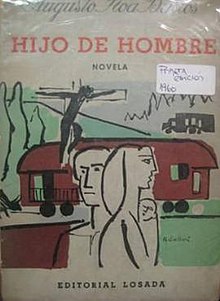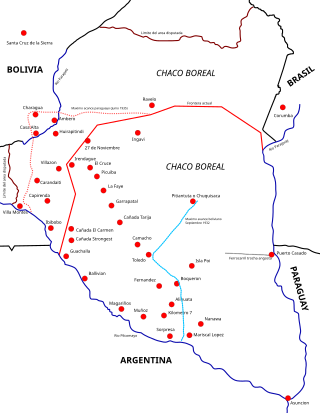
The Chaco War was fought from 1932 to 1935 between Bolivia and Paraguay, over the control of the northern part of the Gran Chaco region of South America, which was thought to be rich in oil. The war is also referred to as La Guerra de la Sed in literary circles since it was fought in the semi-arid Chaco. The bloodiest interstate military conflict fought in South America in the 20th century, it was fought between two of its poorest countries, both of which had lost territory to neighbours in 19th-century wars.
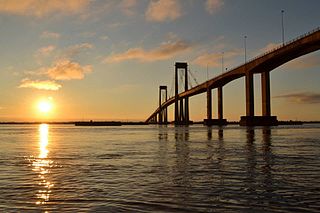
Corrientes is the capital city of the province of Corrientes, Argentina, located on the eastern shore of the Paraná River, about 1,000 km (621 mi) from Buenos Aires and 300 km (186 mi) from Posadas, on National Route 12. It has a population of 346,334 according to the 2010 Census. It lies opposite its twin city, Resistencia, Chaco.

Augusto Roa Bastos was a Paraguayan novelist and short story writer. As a teenager he fought in the Chaco War between Paraguay and Bolivia, and he later worked as a journalist, screenwriter and professor. He is best known for his complex novel Yo el Supremo and for winning the Premio Miguel de Cervantes in 1989, Spanish literature's most prestigious prize. Yo el Supremo explores the dictations and inner thoughts of José Gaspar Rodríguez de Francia, the eccentric dictator of Paraguay who ruled with an iron fist, from 1814 until his death in 1840.
The William Faulkner Foundation (1960-1970) was a charitable organization founded by the novelist William Faulkner in 1960 to support various charitable causes, all educational or literary in nature.
Latin American literature consists of the oral and written literature of Latin America in several languages, particularly in Spanish, Portuguese, and the indigenous languages of the Americas. It rose to particular prominence globally during the second half of the 20th century, largely due to the international success of the style known as magical realism. As such, the region's literature is often associated solely with this style, with the 20th century literary movement known as Latin American Boom, and with its most famous exponent, Gabriel García Márquez. Latin American literature has a rich and complex tradition of literary production that dates back many centuries.
Son of man is the translation of various Hebrew and Greek phrases used in the Hebrew Bible, various apocalyptic works of the intertestamental period, and in the Greek New Testament.

Olga Zubarry was an Argentine actress who appeared in film between 1943 and 1997. She made over 60 appearances in film, spanning six decades of Argentine cinema, but is best known for her work during the Golden Age of Argentine Cinema. Throughout the course of her career, she received four Silver Condor Awards, two Martín Fierro Awards, a Konex Foundation Award and several others for her films and television performances. She is credited with starring in the first film in Argentina which featured nudity, though only her back was shown and she stated repeatedly that she wore a flesh-colored mesh and was not truly nude.

The cinema of Paraguay has historically been small. However, this has begun to change in recent years with films like El Toque del Oboe (1998); María Escobar (2002); O Amigo Dunor (2005), which competed for Best Movie in the Rotterdam International Film Festival; Hamaca Paraguaya (2006), which was screened at the Cannes Film Festival, gaining critical acclaim both in Paraguay and abroad; 7 cajas (2012); Latas Vacías (2014); and Luna de Cigarras (2014).

The Latin American Boom was a literary movement of the 1960s and 1970s when the work of a group of relatively young Latin American novelists became widely circulated in Europe and throughout the world. The Boom is most closely associated with Julio Cortázar of Argentina, Carlos Fuentes of Mexico, Mario Vargas Llosa of Peru, and Gabriel García Márquez of Colombia. Influenced by European and North American Modernism, but also by the Latin American Vanguardia movement, these writers challenged the established conventions of Latin American literature. Their work is experimental and, owing to the political climate of the Latin America of the 1960s, also very political. "It is no exaggeration", critic Gerald Martin writes, "to state that if the Southern continent was known for two things above all others in the 1960s, these were, first and foremost, the Cuban Revolution and its impact both on Latin America and the Third World generally, and secondly, the Boom in Latin American fiction, whose rise and fall coincided with the rise and fall of liberal perceptions of Cuba between 1959 and 1971."

The dictator novel is a genre of Latin American literature that challenges the role of the dictator in Latin American society. The theme of caudillismo—the régime of a charismatic caudillo, a political strongman—is addressed by examining the relationships between power, dictatorship, and writing. Moreover, a dictator novel often is an allegory for the role of the writer in a Latin American society. Although mostly associated with the Latin American Boom of the 1960s and 1970s, the dictator-novel genre has its roots in the nineteenth-century non-fiction work Facundo (1845), by Domingo Faustino Sarmiento.

Benigno Gabriel Casaccia Bibolini was a Paraguayan novelist. He is considered the father of modern Paraguayan literature. Augusto Roa Bastos, another notable Paraguayan novelist, is quoted as saying “Gabriel Casaccia is the founder of modern Paraguayan narrative, which gives, in good measure, a fundamental character to all of his work and, to its author, the unusual merit of having launched the genre in a country which was fictionally unknown.”
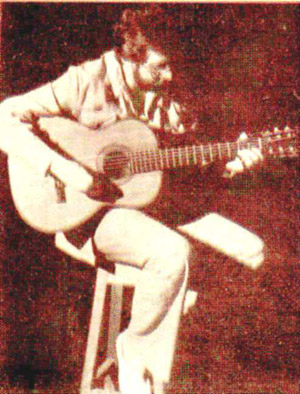
Maneco Galeano, was a Paraguayan musician, songwriter and journalist.

Emiliano FernándezRivarola was a Paraguayan poet, musician, and soldier. He is the author of more than 2,000 poems and participated in the Chaco War as an infantryman.
Hérib Campos Cervera (1905-1953) was a Paraguayan poet and writer.
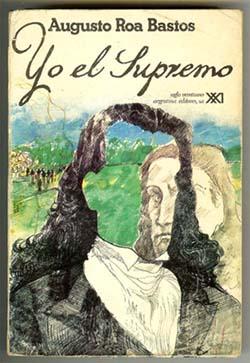
I, the Supreme is a historical novel written by exiled Paraguayan author Augusto Roa Bastos. It is a fictionalized account of the nineteenth-century Paraguayan dictator José Gaspar Rodríguez de Francia, who was also known as "Dr. Francia." The book's title derives from the fact that Francia referred to himself as "El Supremo" or "the Supreme." The first in a long line of dictators, the Supreme was a severe, calculating despot. The central themes of the novel are power and language and the relation between the two. The Supreme believes himself to be above all power and history: "I don't write history. I make it. I can remake it as I please, adjusting, stressing, enriching its meaning and truth." Yet this assertion is constantly challenged by the very fact that while he achieves power by means of writing and dictating, these very same methods can be used by others to dispute his authority. Not even his own identity, represented by the personal pronoun I, is safe and can easily be usurped as is demonstrated by the incident of the pasquinade. Language, as powerful as it is, can never be controlled and can just as easily be used as an instrument of coercion as an instrument of resistance.
Augusto is an Italian, Portuguese, and Spanish given name or surname. Derived from Augustus, meaning in Latin "majestic," "the increaser," or "venerable", it is notable as being the name of the first emperor of Ancient Rome. The Greek translation of the title Augustus was Sebastos, from which the name Sebastian descends.

Thunder Among the Leaves is a 1958 Argentine drama film directed by Armando Bó, starring himself, Isabel Sarli, Ernesto Báez and Andrés Laszlo. The screenplay by Paraguayan writer Augusto Roa Bastos was based on his short story La hija del ministro. Set in Paraguay, the story is about a strike at a sawmill.
Thirst aka Hijo de Hombre, aka Choferes del Chaco is a 1960 Argentine-Spanish war film directed by Lucas Demare. It is set during the Chaco War (1932–35) between Bolivia and Paraguay, sometimes known as the "War of the Thirst". The script is based on a chapter of Augusto Roa Bastos novel Hijo de Hombre. It was made as a co-production between Argentina Sono Film and the Spanish company Suevia Films.
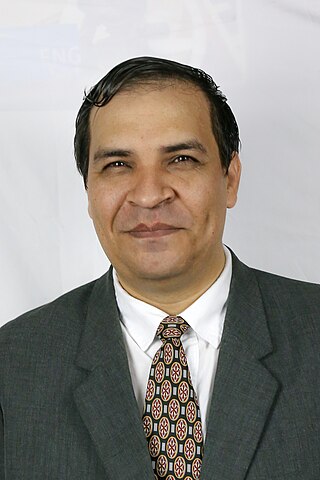
Javier Viveros is a Paraguayan writer, active member of Academia Paraguaya de la Lengua Española, corresponding member of Real Academia Española and former Vice-president of the Paraguayan Writers Society.
Carlos Federico Abente Bogado was a Paraguayan lyricist, poet and prominent doctor, author of the lyrics of the song "Ñemitî" ("Sowing"). Based in Argentina, he was co-founder of Policlínica Privada, and AMSA Asistencia Médica SA, pioneering companies in integrated health insurance and prepaid medicine.
